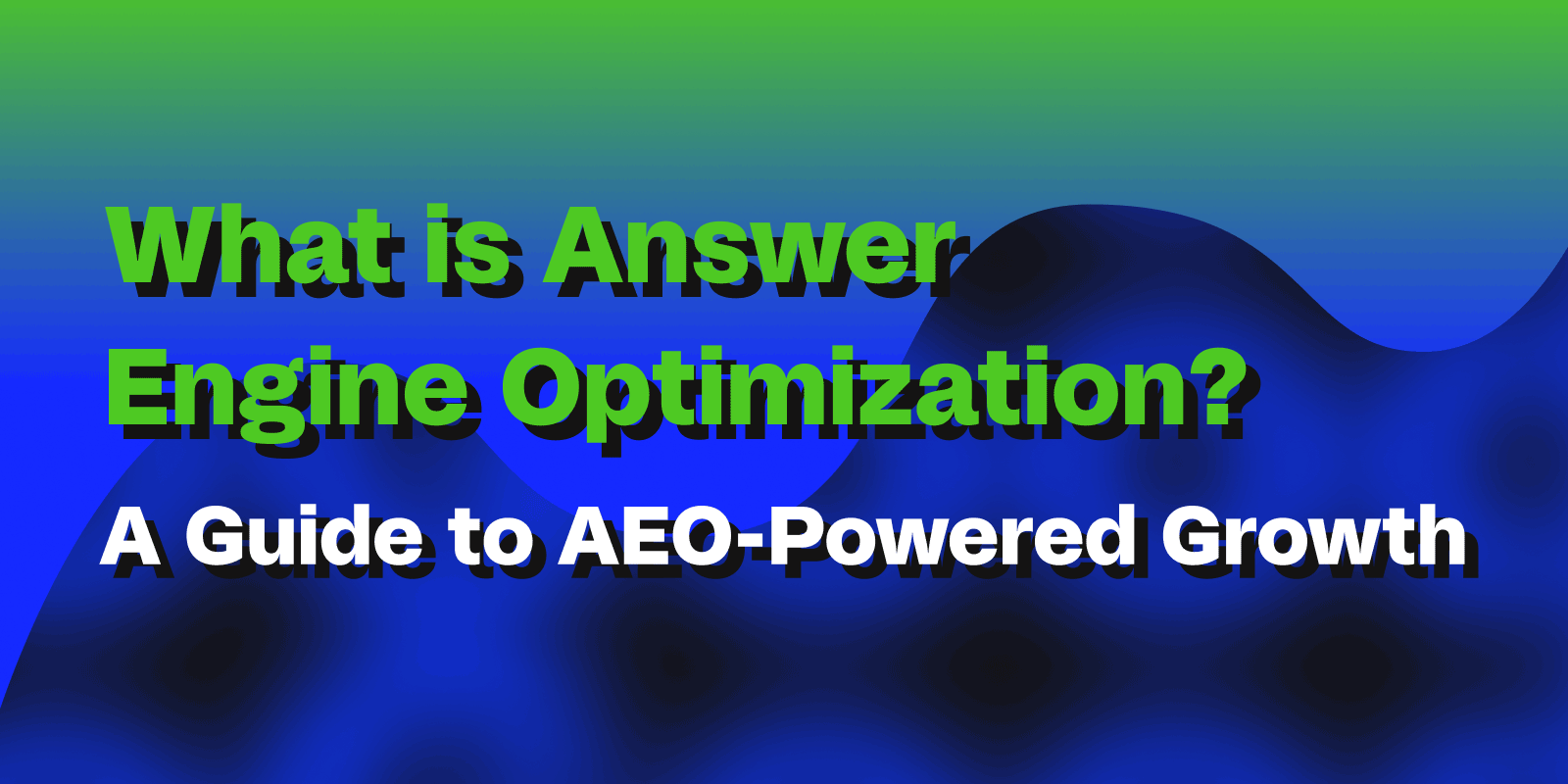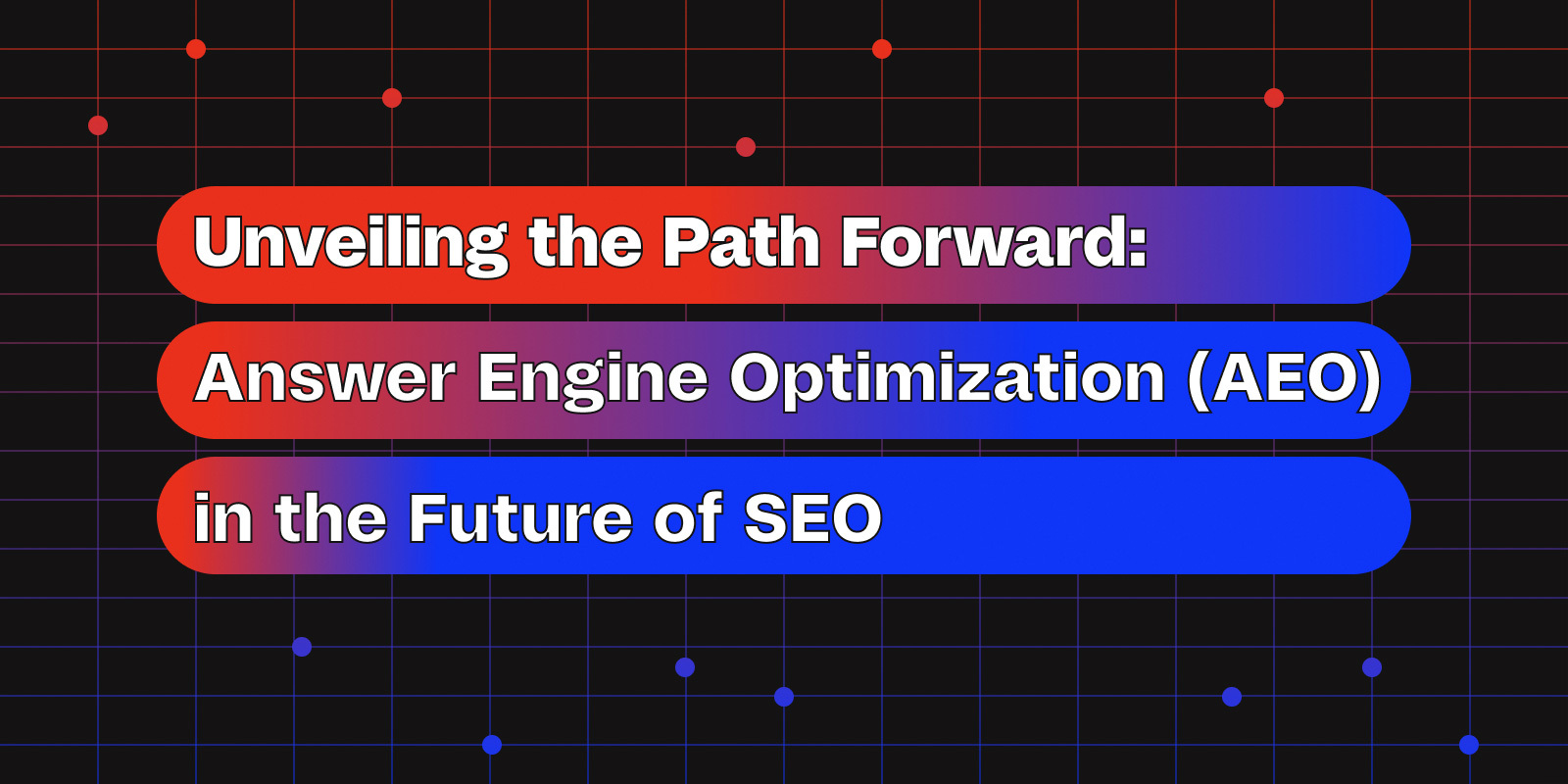Google’s announcement of integrating an artificial intelligence chatbot into the search engine results page (SERP), also known as the AI Overviews, has marketers wondering how this will impact the future of search from both an organic and paid perspective. The announcement leaves marketers questioning how AI Overviews will impact ad placement, the impact of CPCs and CTRs, and what they can do to minimize negative impact.
Here’s what we’ll cover:
- How Are AI Overviews Effecting Ad Placement?
- How Will AI Overviews Impact PPC Ad Performance?
- New Performance Metrics
- Additional Ways PPC Marketers Adapt to AI Overviews
How Are AI Overviews Effecting Ad Placement?
A recent study done on 100,000 keywords by SEO platform SE Ranking found the following:
- Shopping ads (carousels) are shown above the AI Overview 80% of the time.
- More ads appeared below the AI Overview than above it
- No ads appeared alongside the AI Overview 27% of the time
In 2023, Google’s top revenue-driving source was ad placements, with 53% of all revenue from ads coming from search ad placements. Due to this, in our opinion, it was never a question of IF Google would include ads within AI Overviews while continuing to drive search ad performance, but it was HOW Google was going to implement ads into AI Overviews while continuing to drive strong search ad performance.
When AI Overviews were first released, Google started by running their ads above and below the Search Generative Experience (SGE). While these original placements are still around, recent versions of the AI Overview include native ads within the experience. Any ad located within the AI Overview is labeled as “sponsored”.
Google has mentioned that if a searcher’s query is commercially driven, they will likely show an ad, instead of the AI Overview Google will only use AI when necessary to promote items like pricing, reviews, and stores to help make the user convert.
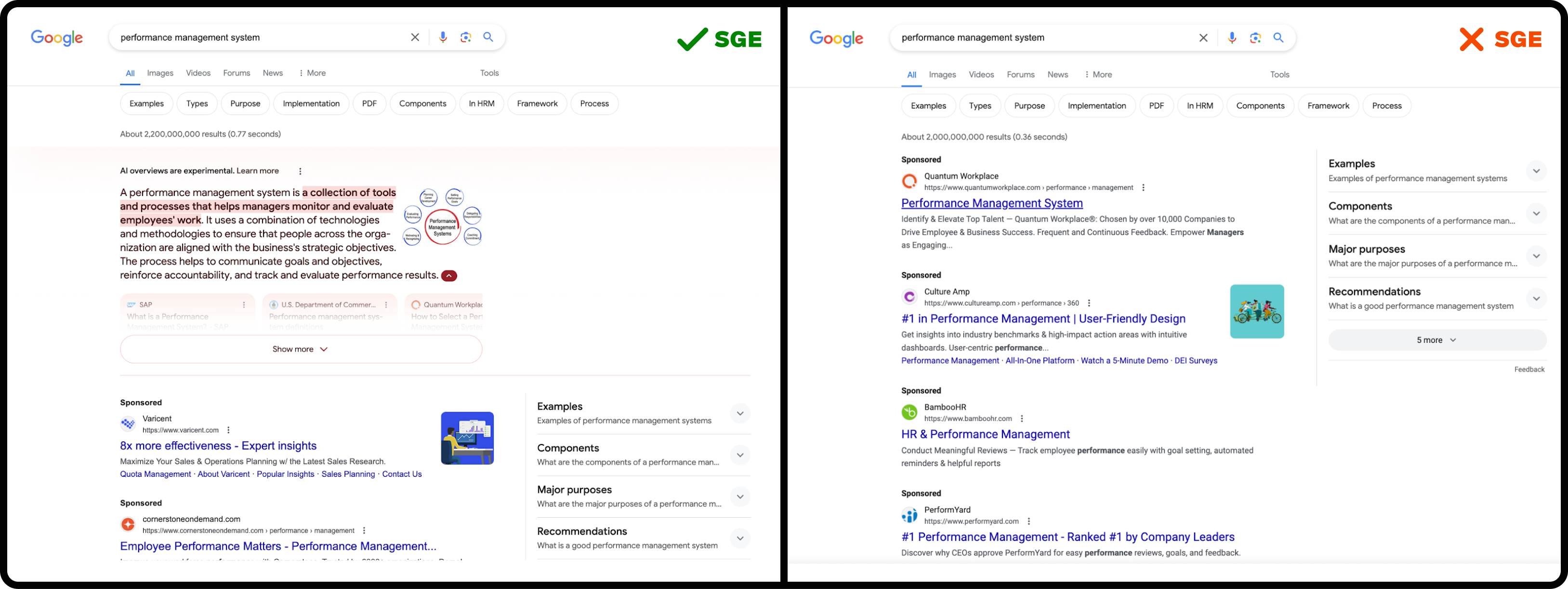
While AI Overview ad placements are still being tested and adapted, Google’s SCP and CPO, Philipp Schindler confirms that ads will play an important role in these overviews saying, “SGE is creating new opportunities for us to improve commercial journeys for people by showing relevant ads alongside search results.”
How Will AI Overviews Impact PPC Ad Performance?
In the ideal world, we would have a crystal ball that we can look into to see how the widespread implementation of AI Overviews will impact the performance of Google Ads, but we don’t. What we do know is that there will be changes to the way that people search and how they utilize the SERP.
Across the board, we feel the new feature will mainly impact top-of-funnel awareness/education-based strategies, leaving bottom-off-funnel conversion-based strategies relatively unchanged. Below are our predictions on how AI Overviews will impact PPC.
Increase in Long-tail Conversational Queries
Due to the more conversational aspect of AI Overviews and generative AI as a whole, people are going to be shifting the way that they search to also being more conversational. We are moving away from the days of one to two-word searches and moving towards full sentences using our natural conversational language.
This was a trend that we were already starting to see as voice search became more popular, but the expansion of AI Overviews is only expected to continue that trend as people communicate with the experience in a similar manner that they would communicate with a human.
For example, a CMO looking to outsource some of their work to an agency might have searched for “Marketing Agencies” in the past, but with the rise of AI Overviews, that search might look more like “I need a PPC marketing agency with proven results.” then they might follow up with an additional search for “Show me some of their case studies.”
What Can Marketers do to Prepare?
As searches are becoming more conversational with the rise of artificial intelligence chatbots, marketers need to adjust both their keyword strategy and their ad copy strategy to reflect this shift.
When reviewing your keywords, move away from the short-tail keywords that are only one to two words and lean into more long-tail keywords. Broad match keywords are also a great way to ensure that you are covering your bases and reaching those more conversational keywords.
There are plenty of other ways to find conversational-based long-tail keywords. You can test plugging in your top-performing keywords into keyword research tools such as Google’s Keyword Planner, SEMRush, and AHREFS. We would also recommend reviewing your search term report to see if you can find any conversational trends within your current keyword searches.
Also, outsmart AI with AI. We have found it useful to ask chatbots for examples of conversational searches that a user might type into a search engine to learn more about your product or service. Test using some of the suggestions that it gives in your keyword strategy.
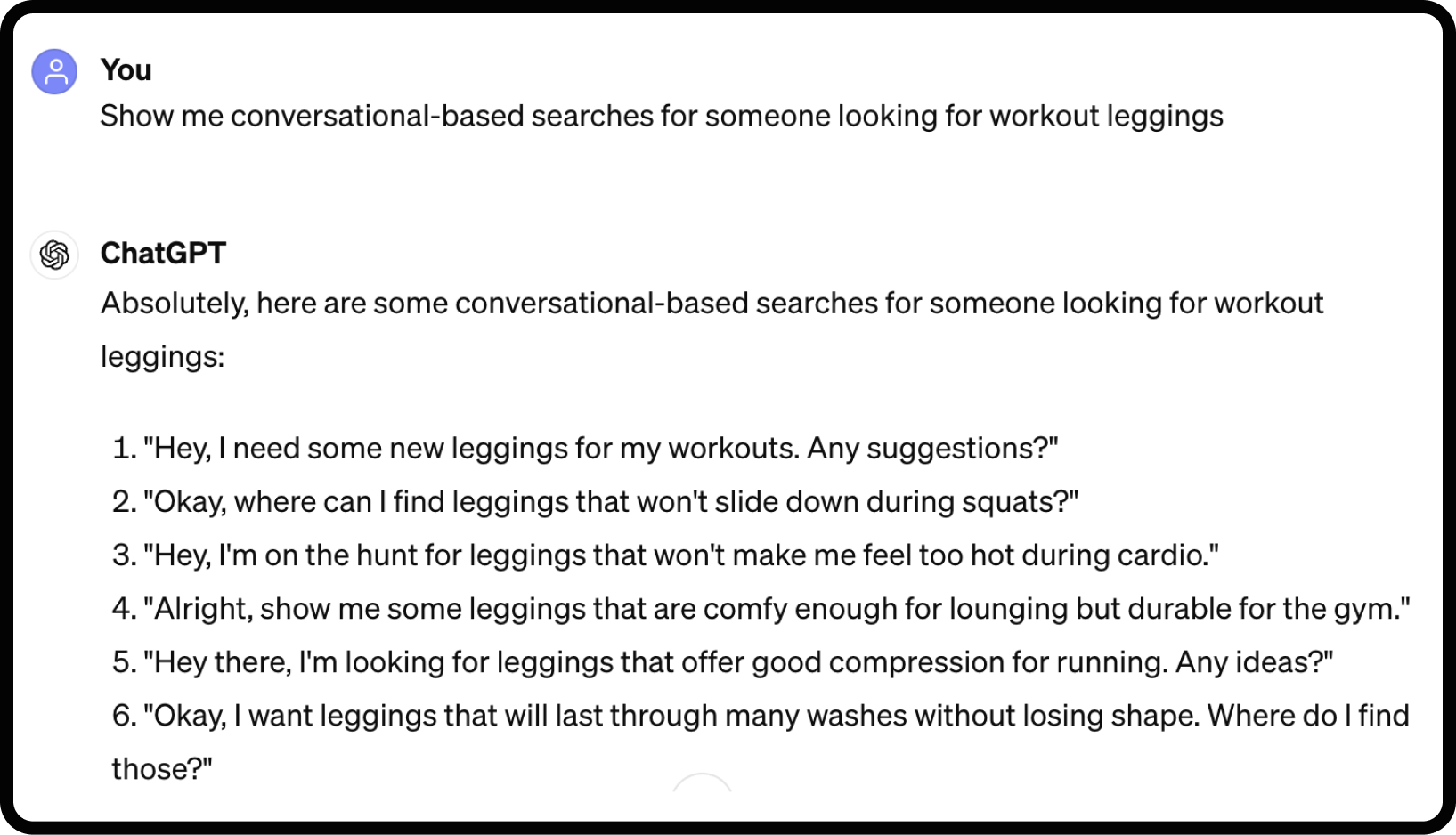
Ad copy needs to be moving away from its more salesy tones and lean towards a more natural voice that helps solve the problem that the user is searching for. Where strong call-to-actions were once a best practice for all advertisers, they now might feel unnatural with this new conversational shift. Give the searcher some sort of answer within the ad copy, but just enough that they want to click into your ad to learn more.
Similar to conversational keyword research, you can also use AI tools to help you come up with conversational-based ad copy for your ads. Try asking a chatbot to help you draft some conversational-based ad copy that solves a problem that your searchers are looking for. Your copy should provide the searcher with the solution to their problem to blend in with the AI Overview while also compelling users to want to click through for more information.
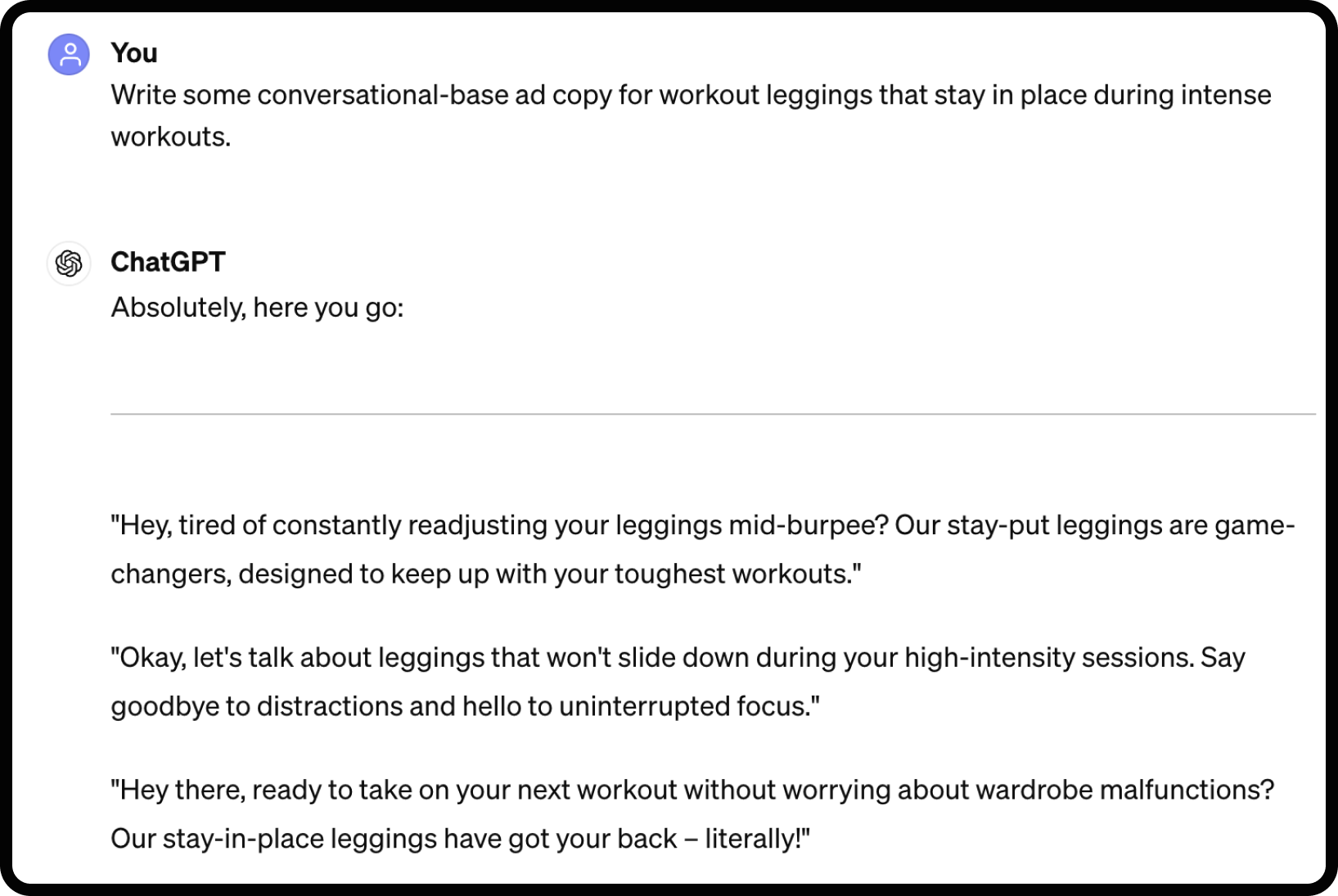
New Performance Metrics
The main goal of AI Overviews is to increase the number of zero-click searches. This means you may see a decrease in CTR and an increase in CPCs. It is predicted that, on average, overviews will decrease CTRs by 30%. As a result, you should shift your focus towards impressions, ROAS and ROI of your ads.
Despite lower CTRs, there could be a positive side effect of these summaries on PPC ads. AI Overviews will make users more qualified before they click your ad. Overviews are going to give users a baseline understanding of what they are searching for. This means that if someone clicks through your ad to your site, they are already slightly further through the funnel than they would have been without the summary, making them one step closer to their conversion point. This could end up having a positive impact on your CVRs and overall ROAS.
What Can Marketers do to Prepare?
Optimize your landing pages for conversions
With searchers now receiving baseline answers directly on the Search Engine Results Page (SERP) those who do click through to your landing page are likely to be more informed and farther along in the purchasing/conversion process than before. This underscores the importance of ensuring that your landing pages are optimized for conversions.
Conversion Rate Optimization (CRO) becomes increasingly critical in this context. Below are some key strategies to ensure your landing page is ready for conversions:
- Shorten Form Fields: Streamline your checkout or form submission process by minimizing the number of fields required.
- Highlight Value Proposition: Make your unique value proposition immediately visible and compelling.
- Clear Call-to-Action (CTA): Ensure your CTA is prominently displayed above the fold and clearly communicates what action you want the visitor to take.
- Leverage Social Proof: Incorporate testimonials, reviews, or user-generated content to build trust and credibility.
- Minimize Distractions: Remove unnecessary elements that could divert attention away from your primary conversion goal.
- Offer Incentives: Provide incentives such as discounts, free trials, or exclusive offers to incentivize conversions.
Google Ads offers great tools for A/B testing different landing page variations, enabling you to identify what resonates best with your target audience. By optimizing your landing pages now, you’ll be better prepared to capitalize on the more qualified leads generated by SGE in the future.
Increased Competition for Ad Placement
As mentioned above, ads can be shown above or below the AI Overview With 35% of ads showing below the overview, users are going to have to scroll through a lot more noise and distraction before getting to your ad, likely dropping CTRs even lower.
With that being said, getting that top placement is going to become more important than ever to get your ad directly in front of the searcher and avoid losing them below the summary. This is going to make that Absolute Top Ad placement even more sought after, meaning marketers will need to put extra effort into improving ad rank so your ad doesn’t drop below the feature.
What Can Marketers do to Prepare?
Advertisers are not going to want their ads to be pushed below the AI Overview. Get ahead of the curve and work on improving your ad rank now to win that placement early and often.
Remember, six key components make up Ad Rank scores:
- How much you are willing to bid for your ad placement
- The quality of your landing pages and ads (also known as your Quality Score)
- The Ad Rank threshold (your ability to show in the auction
- How competitive that auction is for your specific keyword
- The relevancy of your ad to the specific search
- The overall expected impact that your ad will have on the searcher
The main item that you can and should focus on is improving your Quality Scores. That is the only feature that you can control without spending additional ad dollars to raise your bid.
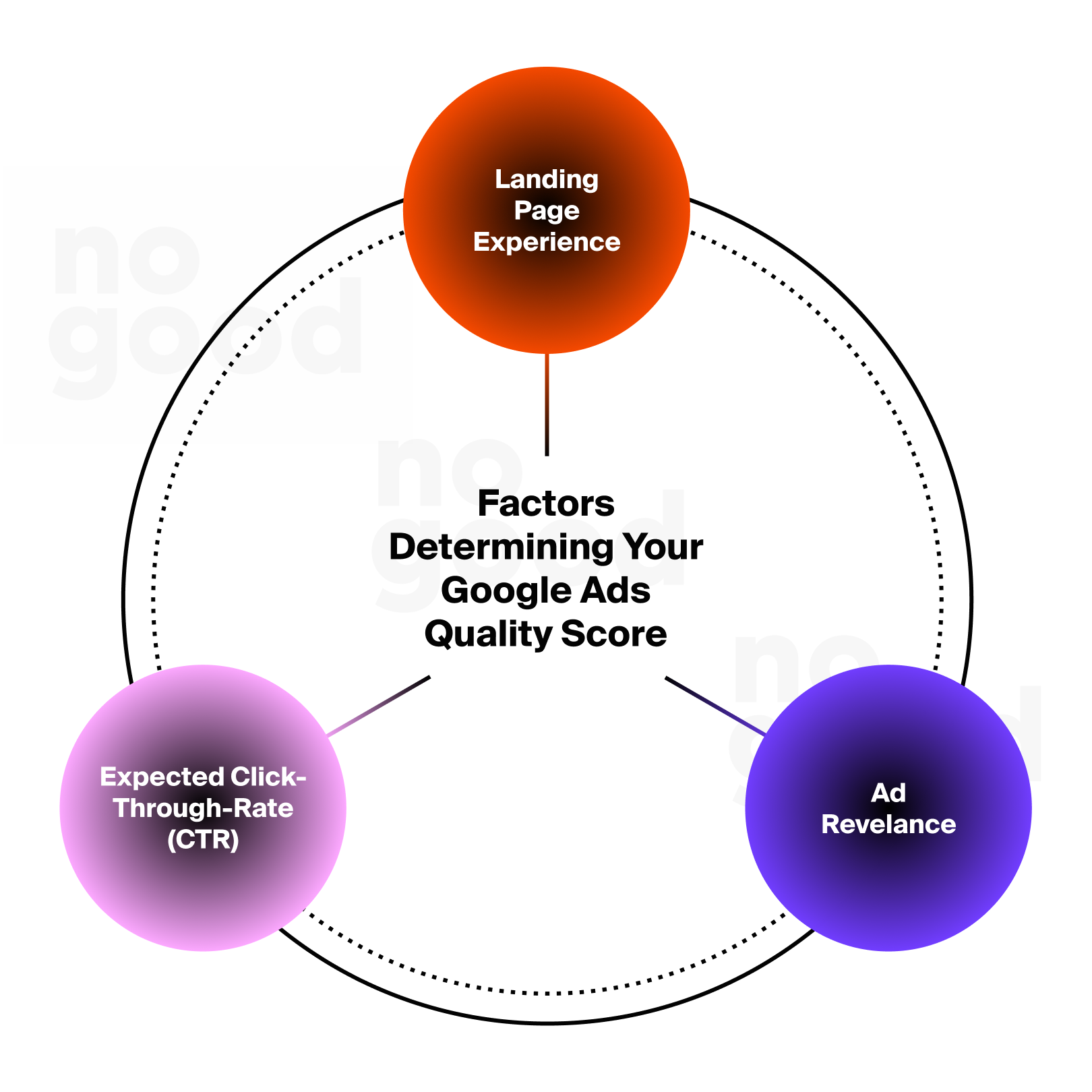
Additional Ways PPC Marketers Adapt to AI Overviews
Expand your reach with new TOFU tactics
As it is likely that AI Overviews will mainly impact top-of-funnel (TOFU) search efforts, now is a great time to expand your reach with new TOFU tools offered by Google. Whether it is running a new video campaign to get in front of your audience on YouTube Shorts or creating a Demand Gen campaign to promote a free white paper download, start developing new TOFU strategies because it is likely that search ads won’t generate the traffic anymore as summaries are leading to an increase in clickless impressions.
We have seen a lot of success running Demand Gen campaigns to help fill the TOFU for our B2B clients since the launch of the AI Overview beta. Test running a Demand Gen campaign to promote a white paper or case study that will benefit your potential audience. Make sure you clearly promote the benefit that downloading the resource will have on the user in the creative and copy.
For eCommerce brands, video campaigns can be a really successful approach to filling the TOFU, especially with videos now showing on YouTube shorts, where product promoters are finding that vertical video ads are driving 10% to 20% more conversions per dollar.

